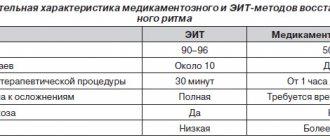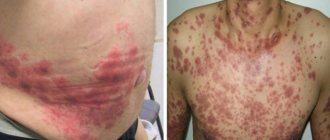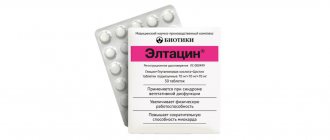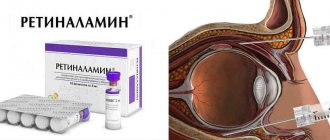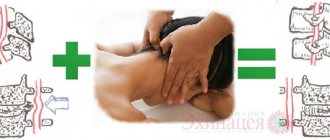In modern conditions, the health status of the children's population is characterized by an increase in the number of chronic diseases, a decrease in physical development indicators, and an increase in mental and behavioral disorders. The growth of chronic pathology leads to progressive disability of the child population. According to the Center for Medical Statistics of the Ministry of Health of Ukraine (2005), over a 10-year period, the level of general disability increased by 78%. At the same time, the proportion of disabled children with diseases of the nervous system has currently reached 21.5% (together with mental and behavioral disorders - 37.4%). The incidence rate of diseases of the nervous system tends to increase: in 2000 - 39.4 ‰, in 2005 - 48.2 ‰.
Treatment of diseases of the nervous system has always been considered one of the most difficult and pressing problems of medicine, which is associated with the complexity of the functional organization of the nervous system and the relative lack of knowledge about the causes and mechanisms of development of many diseases. Despite the enormous successes of modern neurophysiology and clinical pharmacology, the treatment of neurological patients does not become less difficult. Therefore, the constant search and introduction into clinical practice of new drugs for the treatment and prevention of functional and organic diseases of the nervous system in children is understandable.
Glycised is a drug based on the non-essential amino acid glycine. The latter is aminoacetic acid (the simplest aliphatic amino acid H2NCH2COOH), which is found in all tissues of the body. Being a broad-spectrum metabolite and a specific regulator of nerve cell activity, glycine plays the role of a natural inhibitory mediator that interacts with glycinergic and GABAergic receptors. Thanks to such properties, glycine is able to protect neurons from the excessive influence of catecholamines, a sharp increase in the content of which, as a rule, accompanies stress of any origin. The biological significance of glycine is also due to its participation in the construction of proteins and the biosynthesis of many physiologically active compounds: glutathione, hippuric and glycocholic acids, porphyrins.
The therapeutic effectiveness of glycine is due to its following features:
1) universal anti-stress effect;
2) mild sedative effect;
3) the ability to improve mental performance (nootropic effect);
4) antitoxic effect in case of chemical intoxication.
Thus, Glycised has stress-protective, anti-stress, sedative, nootropic and antitoxic effects.
Since the highest density of glycine receptors is found in the area of the hypoglossal nerve nucleus, the sublingual area of the oral cavity has the highest sensitivity to the action of glycine, and sublingual use of Glycised ensures its maximum effectiveness.
Pharmacodynamics and pharmacokinetics
Glycine is an aminoacetic acid , usually found in almost all tissues of the body, most of all in the brain and spinal cord. Participates in many metabolic processes, in particular it is an important neurotransmitter . Takes part in the process of transmission of nerve impulses, blockade of alpha-adrenergic receptors . Also, the active substance takes part in the synthesis of proteins and other bioactive elements, strengthens the membrane of nerve fibers - neurons . Thus, tension decreases and neurons become less sensitive to the effects of toxins .
The drug also acts as a nootropic . It increases the number of electrical impulses in various parts of the brain, memory and thinking processes improve, and the speed of psychomotor reactions increases. In this regard, Glicised is prescribed for mental and physical fatigue.
The drug has the ability to reduce the toxic effects of various psychotropic substances by reacting with them and neutralizing them. For example, glycine reacts with phenol , converting it to hippuric acid .
Sublingual administration is considered the most effective . It does not accumulate in body tissues; it is metabolized to inactive substances.
Use of Glycised for acute cerebral ischemia
In recent years, a number of authors have emphasized the increase in vascular pathology of the brain in children, including strokes. However, in different studies there is a significant variation in determining the frequency of stroke in children - from 2 to 13 per 100,000 children per year: in the USA - 2-3 per 100,000, in France - 13 per 100,000. According to the Canadian Pediatric Registry stroke, the incidence of ischemic stroke in children is 2.7 per 100,000 per year, according to the National Hospital Discharge Survey - 7.8 per 100,000.
Experimental data on the potential neuroprotective properties of glycine, the introduction of its convenient pharmaceutical form into medical practice, the absence of toxicity and significant side effects have created the prerequisites for conducting clinical trials of glycine in acute focal cerebral ischemia.
It has been established that sublingual use of glycine in a dose of 1–2 g/day for 5 days from the onset of the disease helps reduce mortality and reduce functional defects: the number of patients with complete restoration of impaired neurological functions or their moderate limitation increases. Treatment with glycine significantly improves clinical dynamics and accelerates regression of neurological deficits by the 6th day of the disease (at the end of glycine therapy) and by the end of the acute period of stroke. It is especially important to note the positive effect of glycine in the treatment of seriously ill patients, taking into account the fact that with a moderate stroke, “spontaneous” recovery of neurological functions is possible (regardless of treatment).
The study made it possible not only to establish the neurotransmitter effects of the pharmaceutical drug glycine, but also to confirm its general metabolic effect. Administration of glycine at a dose of 1–2 g/day contributed to a statistically significant reduction in the level of secondary products of lipid peroxidation in patients with moderate stroke and slowed down the development of oxidative stress in severe stroke.
When analyzing the dynamics of spontaneous bioelectrical activity of the brain, a significantly more complete and accelerated normalization of the EEG pattern was established by the 6th day of the disease in patients treated with glycine. The revealed normalization of the EEG pattern is of particular significance, as it allows us to predict a favorable outcome of stroke with good recovery of impaired neurological functions.
When studying somatosensory evoked potentials and conducting transcranial cortical magnetic electrical stimulation, a reliable beneficial effect of glycine on the processes of central efferent conduction in patients with stroke of varying degrees of severity and central afferent conduction in moderate stroke was established, which correlates with accelerated clinical regression of motor and sensory focal disorders and makes it possible to predict good functional recovery.
An objective quantitative analysis of neurophysiological parameters revealed a certain predominance of the positive effects of glycine when the ischemic focus is localized in the left hemisphere of the cerebrum.
Indications for use
Glycised tablets are prescribed for disorders of the nervous system:
- in case of cerebral circulatory disorders ;
- for traumatic brain injuries ;
- for neurocirculatory dystonia ;
- encephalopathy of various origins;
- in conditions after previous infections and infectious diseases of the brain ;
- asthenia , withdrawal symptoms after drinking alcohol;
- with physical or mental overload;
- to improve memory and sleep quality, treat depression .
Use of Glycised for epilepsy
For the first time in animal experiments it was shown that the administration of high doses of glycine or some of its agonists has an anticonvulsant effect and also enhances the effects of antiepileptic drugs. Such an effect of glycine and its agonists would be impossible if the main mechanism of the neurotransmitter were only the activation of glutamatergic systems. Subsequently, a number of works appeared in the literature on the use of glycine for convulsive conditions in humans.
We used Glycised in the complex treatment of epilepsy in 36 children aged 5–14 years (14 girls, 22 boys, average age 9.5 ± 3.2 years). Glycised allows you to reduce the dose of anticonvulsants (and therefore reduce intoxication caused by taking anticonvulsants), eliminate anxiety and depressive disorders, and improve mental performance.
Instructions for use of Glycised (Method and dosage)
According to the instructions for Glycised, it is taken sublingually or buccally .
As a rule, children (from 3 years old) and adults are prescribed 1 tablet 3 times a day. The course of treatment ranges from two weeks to a month. The maximum amount of the drug taken per day is 0.3 grams.
For insomnia , take a tablet or half a tablet 20 minutes before bedtime.
When treating alcoholism , as part of complex therapy, take 3 tablets per day. The course is from two weeks to a month, repeated every 2-3 months.
In case of a stroke, the victim should be given 1 gram of Glycised within the first 3-6 hours. The next 5 days - 1 gram of the drug per day, 30 days - 600 mg per day.
Possibilities of using Glycised in the treatment of muscle spasticity
Muscle spasticity develops due to a decrease in the activity of spinal inhibitory mechanisms and an increase in the excitability of interneurons that transmit flexor reflexes. According to J. Noth (1991), the development of spasticity occurs after supraspinal or spinal damage to the descending motor systems with the obligatory involvement of the corticospinal tract in the process. The following main causes of spasticity have been identified: changes in the excitability of spinal interneurons; hyperexcitability of receptors; formation of new synapses due to sprutting. Currently, the basics of the neuropharmacology of some spinal neurotransmitters have been sufficiently studied. L-glutamate and L-aspartate are secreted by presynaptic terminals of primary afferents, corticospinal fibers and interneurons and are neurotransmitters at a significant number of excitatory spinal synapses. L-glutamate and L-aspartate act on specific receptors that can be divided into N-methyl-D-aspartate (NMDA) and non-NMDA; Moreover, the NMDA receptor complex has multiple loci for binding to biologically active substances. In one of them, glycine is attached to the strychnine-sensitive locus, which is necessary for activation of the NMDA receptor by excitatory amino acids. Glycine itself is an important agonist in this area. Binding of agonists to the recognition region of the NMDA receptor leads to the opening of ion channels for sodium, potassium and calcium. When the channels are open, these cations passively diffuse along electrochemical gradients and cause membrane depolarization. Literature data show that it is advisable to reduce the hyperexcitability of reflex responses in patients with spasticity by blocking the postsynaptic receptors of spinal synapses, which use the excitatory amino acids L-glutamate and L-aspartate as transmitters. It has been shown that NMDA receptors are involved in the chain of polysynaptic reflexes, and non-NMDA receptors are involved in the chain of monosynaptic reflexes. Therefore, NMDA and non-NMDA antagonists can inhibit poly- and monosynaptic reflexes, respectively, and also reduce experimental muscle tone in rats with genetic spasticity (L. Turski et al., 1992, 1993). The most important inhibitory transmitter in the nervous system is GABA. In the spinal cord, GABA functions as an inhibitory transmitter acting on presynaptic receptors in afferent terminals and on postsynaptic receptors in motor neurons and interneurons.
Since glycine acts as a natural inhibitory mediator that interacts with GABAergic receptors, it can be used as a muscle relaxant in various diseases accompanied by muscle spasticity.
During 2004–2007 we treated 1720 children aged 3 months and older. up to 16 years of age, whose clinical picture showed a syndrome of motor disorders in the form of muscle spasticity (911 girls, 809 boys). Of these, the consequences of cerebral infarction - 32 people, the consequences of brain injuries - 19, the consequences of neuroinfections - 74, the consequences of perinatal hypoxic-ischemic brain damage - 226, cerebral palsy - 1369 patients. Dosage of the drug depending on age: children under 1 year of age - 0.5-0.1 g / day, 1-3 years - 0.1-0.4 g / day, children over 3 years - 0.5- 1 g/day, course of treatment - 30–45 days, only 3–4 courses per year.
To assess muscle spasticity and the effectiveness of treatment, it is possible to use a spasticity rating scale - Modified Ashworth Scale of Grading Spasticity (Table 1).
In the treatment of muscle spasticity, it is possible to use Glycised both in isolation (if the severity of spasticity is on the Ashworth scale 1–2) and as an auxiliary drug (if the severity of spasticity is on the Ashworth scale 3–4). It should be noted that the undoubted positive aspects of using Glycised (unlike other muscle relaxants) are the absence of any side effects in the drug, the possibility of its use in children of any age, a wide therapeutic range, the possibility of being prescribed in complex therapy with other drugs (and therefore when selecting complex treatment regimens for muscle spasticity, this will reduce the dosage of other drugs and reduce the risk of side effects and toxicities).
Analogs
Level 4 ATC code matches: Trigamma
Riluzole
Huato Boluses
Vitagamma
Vitaxon
Hypoxene
Glycine
Mexiprim
Mexidol
Neurox
Cytoflavin
The closest analogue is a drug called glycine .
Other analogues: Antifront, Cytoflavin, Huato Boluses, Glutamic acid , Keltican, Mexidol, Neurotropin, Rilutek, Nicomex, Mexiprim, Cortexin, Intellan, Borizol, Armadin .
conclusions
1. The use of the drug Glycised in children accelerates the regression of the main clinical symptoms and increases the effectiveness of treatment.
2. Prescribing Glicised improves cognitive functions, increases concentration, and reduces the level of personal anxiety.
3. During treatment with Glycised, no side effects were observed in the examined children, which indicates that the drug was well tolerated. Long-term use of Glycised is not accompanied by the emergence of pathological dependence. It has been established that with increasing dose, the sedative effect of glycine does not increase and its use is not accompanied by the emergence of pathological addiction, which distinguishes it from other drugs that have a similar effect.
4. The use of Glycised as an auxiliary drug in some cases makes it possible to reduce the doses of potentially toxic drugs (anti-epileptics, reduce muscle tone) or achieve potentiation of the therapeutic effect.
Glicised price, where to buy
The price of Glycised is about 54 rubles for 50 tablets.
- Online pharmacies in RussiaRussia
- Online pharmacies in UkraineUkraine
LuxPharma* special offer
- Glycised tab.
100 mg N50 1600 rub. order
show more
Pharmacy24
- Glycised-KMP 100 mg No. 50 tablets PAT "Kievmedpreparat", Ukraine
55 UAH. order
Note!
The description of the drug Glycised on this page is a simplified author’s version of the apteka911 website, created on the basis of the instructions for use.
Before purchasing or using the drug, you should consult your doctor and read the manufacturer's original instructions (attached to each package of the drug). Information about the drug is provided for informational purposes only and should not be used as a guide to self-medication. Only a doctor can decide to prescribe the drug, as well as determine the dose and methods of its use.
